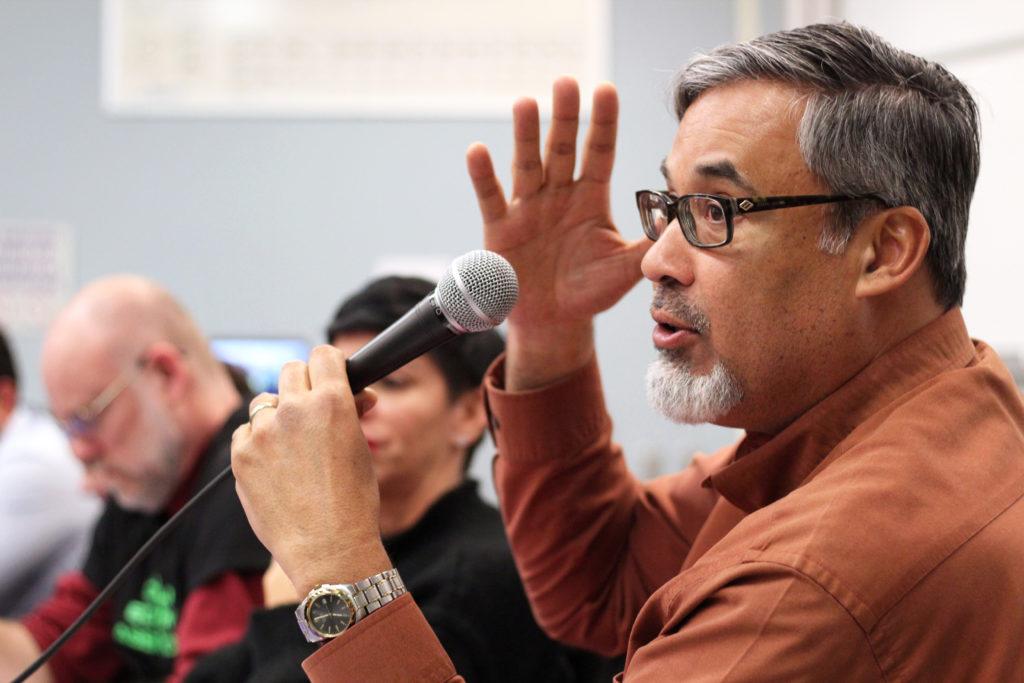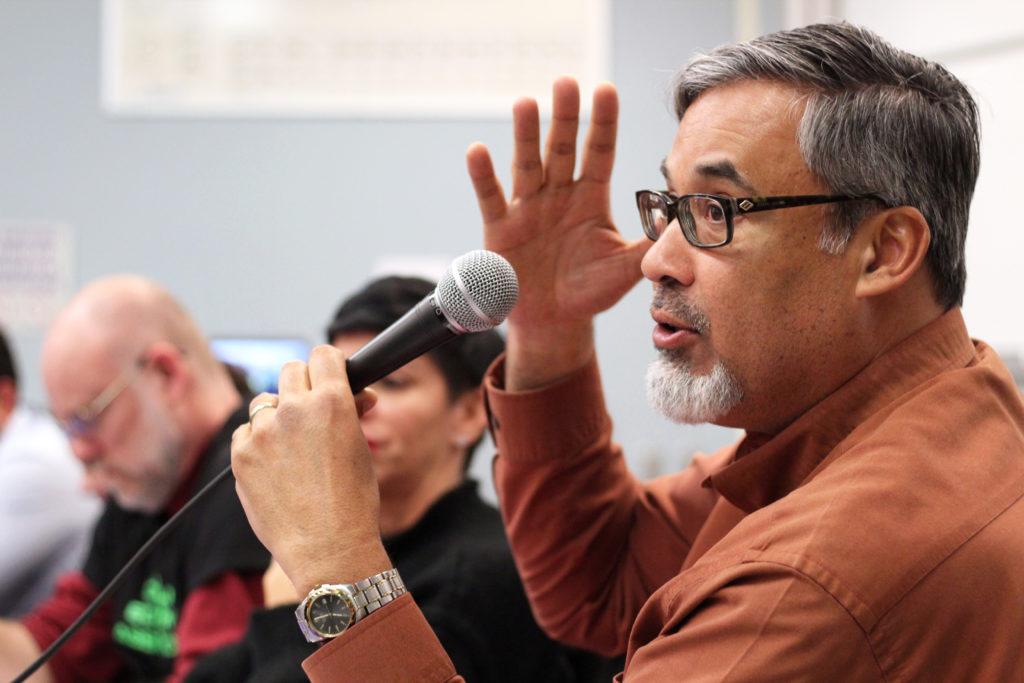Inspired by the recent victory of the Oakland teacher strike, students, teachers and community members attended a teaching about the role of unions on Thursday.
Hosted by SF State’s Graduate College of Education, the packed meeting in the Science Building served to explain why teacher strikes are occurring around the country and why it’s important to continue the fight for public education. The speakers included union members from the California Faculty Association, Oakland Education Association and United Educators of San Francisco.
“We are now experiencing the most momentous moment in the long history of public education,” elementary education department Chairperson Josephine Arce said. “Teachers across the country are organizing, not just for salaries but to save public education.”
Some of the panelists took part in the seven-day Oakland teacher strike, which resulted in a tentative agreement between the union and the school district to raise teacher salaries by 11 percent, decrease class sizes and provide more student support roles.The panelists agreed that the deal was a step in the right direction and was the beginning of a new change.
“Oakland is fighting for the very survival of public education,” OEA bargaining Chairperson Dennis Nelson said. “It’s time to rehumanize the classroom and direct funding where education must take place—in student-centered, teacher-mediated environments.”
More than 3,000 Oakland educators went on strike Feb. 21, with the support of over 30,000 students and parents.
“We basically shut down the entire Oakland Unified School District,” said Guillermo “Memo” Durgin, California Teachers Association staff organizer. “People’s expectations have been raised, they won’t let things gradually go back to the administration [misappropriating funds].”
The Oakland teacher strike came after two years of fighting against the privatization of public schools led by Secretary of Education Betsy DeVos. One of the reasons teachers won the strike was due to the fact that 95 percent of faculty and 97 percent of students and parents supported them, according to Nelson.
PHOTOS BY CHRISTIAN URRUTIA/ Golden Gate Xpress
While some teachers praised the tentative agreement as a victory, others felt conflicted about the results.
“There is definitely controversy on [the agreement],” Oa
kland High School art teacher Vanessa Guerrero said. “I had to walk into my classroom and talk to students that were irate.”
Students told Guerrero they were unhappy with the agreement and felt as if they had been sold out.
“They said because of my raise that they don’t have the guidance counselors and nurses they need,” Guerrero told the crowd.
The increase in salary pay did raise the question as to where the money was coming from.
“It is not true that teacher raises lead to cuts,” Service Employees International Union
organizer Letizia Zamudio said.
Cuts were already occurring in Oakland before the salary raises, according to Oakland school teacher Chastity Garcia.
Many school sports programs were defunded and had to rely on donors, such as the Oakland Raiders.
“They try to use tactics to say that cuts happened because of teachers, but that’s just to create a division,” Garcia said during the meeting.
The union members reached a settlement once they realized they were hitting a peak in their strike. Although they did not get everything they fought for, such as a full 12-percent raise, they gained more than they previously had, according to Nelson.
“It was a very strategic victory,” Nelson said. “We gained organizational strength and power.”
The agreement was just the beginning of the changes the strike fought for, according to Garcia.
Moving forward, the organizations are looking to replace four board members in the next election and to create real changes
to improve their situations.
There have been dozens of teacher strikes throughout the country since 2018, including West Virginia, Oklahoma and Arizona.









